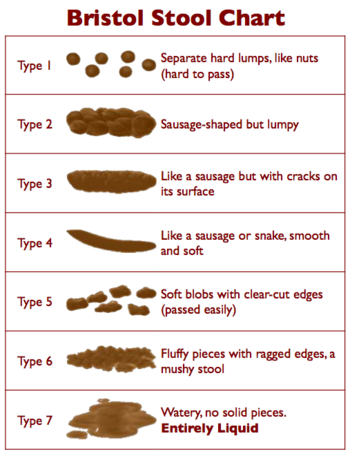History taking in children with constipation
Establish during history-taking whether the child or young person has constipation.
Two or more findings from the table below indicate constipation:
Key components | Potential findings in a child younger than 1 year | Potential findings in a child/young person older than 1 year |
Stool patterns |
|
|
Symptoms associated with defecation |
|
|
History |
|
|

Bristol Stool Scale or Bristol Stool Chart is a medical aid designed to classify the form of human faeces into seven categories. Sometimes referred to in the UK as the "Meyers Scale", it was developed by Heaton at the University of Bristol and was first published in the Scandinavian Journal of Gastroenterology in 1997)
- form of the stool depends on the time it spends in the colon
- Types 1 and 2 indicate constipation, with 3 and 4 being the "ideal stools" especially the latter, as they are the easiest to pass, and 5-7 being further tending towards diarrhoea or urgency.
Reference:
Related pages
Create an account to add page annotations
Annotations allow you to add information to this page that would be handy to have on hand during a consultation. E.g. a website or number. This information will always show when you visit this page.